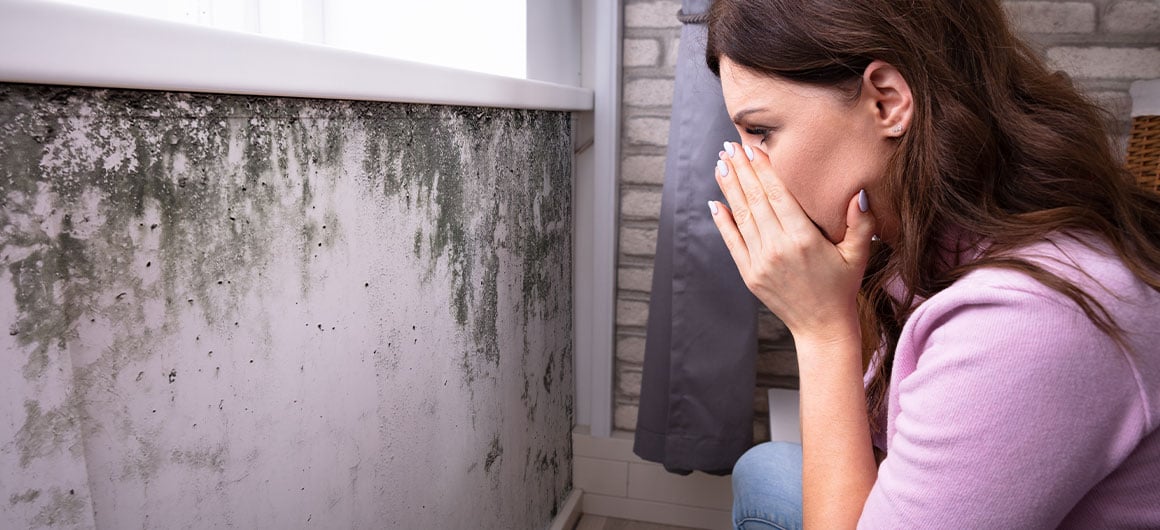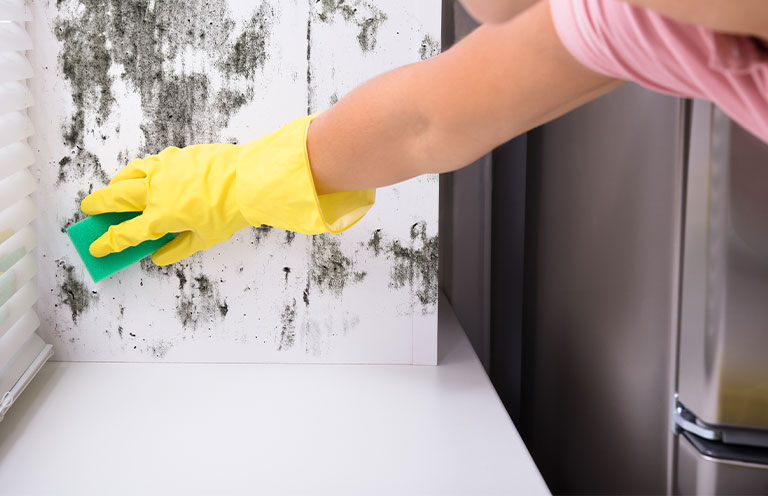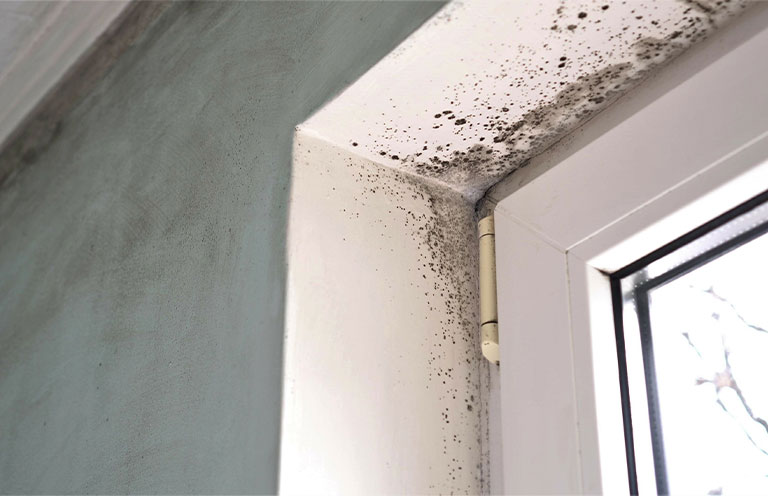How to Deal with Mold: The Hidden Health Hazard in Your Home
Learn why black mold is a serious threat and how to address it before it affects your health and home’s value

Mold, a type of fungus, can grow almost anywhere there's moisture, oxygen, and organic material, but not all mold is the same. There are many types of mold, which can appear as white, black, green, orange, brown, and even pink. While many types can be harmless to people with a healthy immune system, black mold in particular can wreak havoc on structures—and your health.
No matter the type, mold inside your home is a red flag that you shouldn't ignore.

Don't merely paint over mold
If only you could simply paint over mold, home repairs would be a snap. While a fresh coat of paint can hide unsightly black blemishes, what you don't see beneath the surface is mold continuing to grow—rapidly—through your drywall and possibly affecting other materials behind the paint.
Bottom line: Standard paint won't kill the mold spores (microscopic particles that allow mold to spread through the air), nor will it prevent future growth. Even mold-resistant paint isn't a solution since it serves only as a preventative measure to help reduce mold growth—not stop existing mold from spreading.

Health risks associated with mold
Knowing how to deal with black mold effectively is essential to protecting your health, as exposure can lead to serious respiratory and cognitive issues. Some of the biggest risks include the following:
Asthma
Breathing in certain varieties of mold spores can create airway inflammation and make breathing more difficult.
Allergy symptoms
Mold exposure can lead to a runny nose, coughing, wheezing, congestion, and sneezing. You may even notice skin rashes and headaches.
Mental health concerns
There are studies linking mold exposure to issues such as depression and anxiety. Mold triggers inflammation in the body, including the brain, which can contribute to mood disorders. Additionally, mycotoxins produced by mold can be neurotoxic, affecting brain function. Chronic physical symptoms from mold exposure can also lead to mental health struggles.
Other cognitive concerns
Mold exposure can affect areas in your brain responsible for sensory processing, causing lightheadedness and dizziness, tinnitus, blurred vision, and other similar symptoms.
People with weakened immune systems and respiratory conditions—as well as children and the elderly—are at a higher risk of developing mold-related health issues.

The importance of proper mold remediation
Given these health risks, it's crucial to deal with black mold quickly—and properly. Before picking up your demolition tools to tackle it yourself, consider professional intervention, as mold specialists are trained to handle toxic molds safely.
You could perform a swab test to determine the type of mold, but this could cause delays, as many of these self-test kits require sending samples to a lab and waiting for results. A mold remediation specialist or a mold inspection professional can perform an air quality test to determine if your home has toxic mold. These experts are trained to identify mold growth, assess the extent of contamination, and provide removal or mitigation services.
A remediation company ensures that the job is done right. Depending on the type of mold, they may need to contain the areas before removing drywall or flooring. Disturbing the mold can release spores that contaminate other areas and pose a health risk. Proper protection, such as an N95 mask and gloves, is essential, and HEPA air filters are necessary to capture airborne spores. Professionals use commercial-grade filters for more effective cleanup.

Tips for preventing mold growth
Mold needs the right conditions to grow, so it's essential to deprive it of its preferred resources.
One of the most effective ways to do this is by controlling the humidity in your home—as mold thrives in damp environments. The US Environmental Protection Agency (EPA) recommends keeping indoor humidity levels between 30 and 50 percent to prevent mold and mildew.
Other tips include the following:
- Repair leaky faucets and pipes immediately to prevent water buildup.
- Clean your gutters regularly.
- Ensure water drains away from your home.
- Maintain proper ventilation in bathrooms, and run the fan during showers.
- Keep your roof in good condition.
- Promptly repair any broken siding.
. . . . .
By being proactive, you can significantly reduce the risk of mold growth, safeguarding both your health and your home's value.
